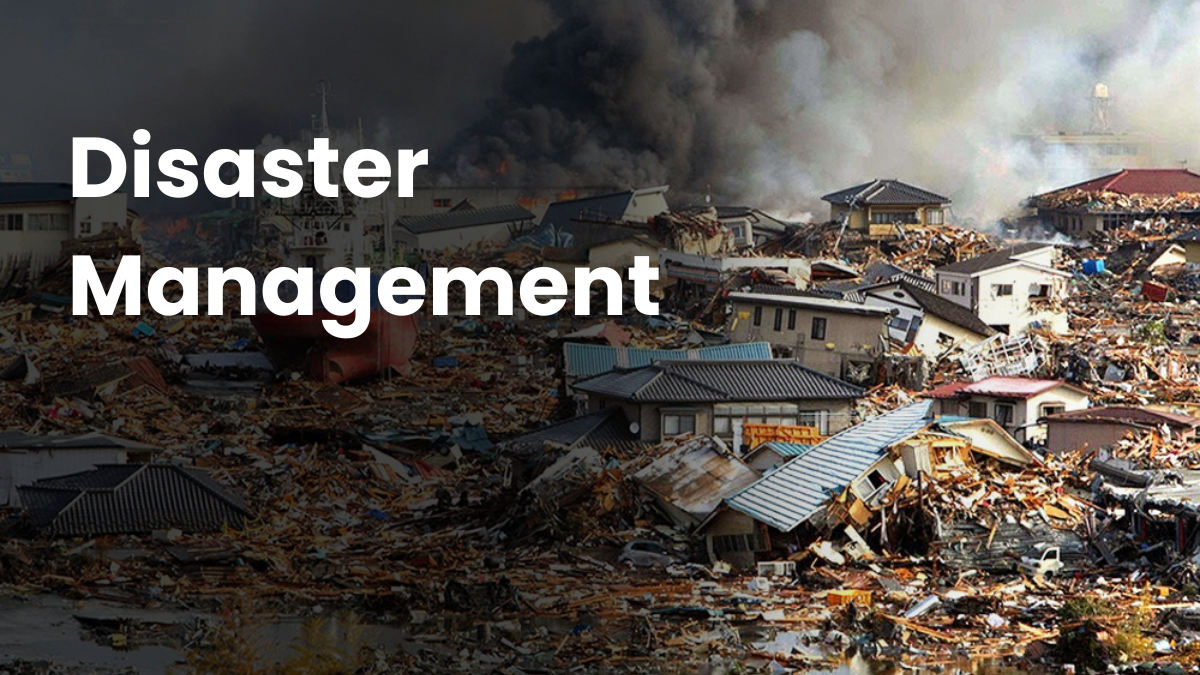Table of Contents
Disaster management is one of those topics in the UPSC syllabus that can be done without putting much effort into it. These can be called a few of the low-hanging fruits in UPSC and the candidates must complete this section and attempt questions from this section as comprehensively as possible. It will be a three-article series where in this article, we will discuss the basics of disaster management, and in the next articles, we will discuss international efforts in disaster management, and disaster management in India.
What is a disaster?
- According to the UN, Disaster is a serious disruption of the functioning of a community or a society at any scale due to hazardous events interacting with conditions of exposure, vulnerability, and capacity, leading to one or more of the following: human, material, economic and environmental losses and impacts.
- Alternatively, disasters can be referred as serious disruptions to the functioning of a community that exceeds its capacity to cope using its own resources.
Types of disasters
Disasters can be classified into the following categories:
- Natural disasters: These can further be divided into the following sub-categories:
- Climatic events: cyclones and storms (associated sea erosion), floods and drought, and
- Geological events: earthquakes, tsunamis, landslides and avalanches.
- Disasters caused by environmental degradation and disturbance of the ecological balance;
- Disasters caused by accidents: These, again, can be further classified into industrial and nuclear mishaps and fire-related accidents;
- Disasters caused by biological activities: public health crises, epidemics, etc;
- Disasters caused by hostile elements: war, terrorism, extremism, insurgency etc;
- Disasters caused by disruption/failure of major infrastructure facilities including communication systems, large-scale strikes, etc; and
- Disasters caused by large crowds getting out of control.
What is disaster management?
- Disaster Management can be called as a set of strategic planning and procedures that is administered and employed to protect critical infrastructures from severe damages when natural or human made calamities and catastrophic even occur.
Phases of disaster management
Pre-crisis: Preparedness
- During this period, it is crucial to assess potential hazards, risks, and vulnerabilities to prevent, mitigate, and prepare for crises effectively. This involves both long-term and short-term measures:
Long-term Prevention Measures:
- Flood Prevention: Construct embankments to control and prevent flooding.
- Drought Proofing: Develop or enhance irrigation facilities and implement watershed management practices.
- Landslide Reduction: Increase vegetation and plantations to minimize the risk of landslides.
Short-term Mitigation Measures:
- Building and Zoning Regulations: Enforce building codes and zoning laws more rigorously to ensure safer construction practices.
- Drainage Maintenance: Ensure regular maintenance of drainage systems to prevent waterlogging and related issues.
- Public Awareness and Education: Improve public education and awareness programs to better inform people about hazard risks and safety measures.
During Crisis: Emergency Response
When a crisis occurs, it is crucial to respond quickly to reduce suffering and minimize losses. Key activities include:
- Evacuation: Moving people from danger areas to safer locations.
- Search and Rescue: Finding and assisting individuals who are trapped or in immediate need of help.
- Provision of Basic Needs: Supplying essential items such as food, clothing, shelter, and medicine to help affected individuals and communities return to a level of normalcy.
Post-Crisis
- Recovery: This is the stage when efforts are made to achieve early recovery and reduce vulnerability and future risks. It comprises activities that encompass two overlapping phases of rehabilitation and reconstruction.
- Rehabilitation: Includes provision of temporary public utilities and housing as interim measures to assist long term recovery.
- Reconstruction: Includes construction of damaged infrastructure and habitats and enabling sustainable livelihoods.
Disaster Risk Reduction Framework
The disaster risk reduction framework is composed of the following fields of action.
- Policy towards Risk Management
- Assessment of Risk including Hazard Analysis and Vulnerability
- Risk Awareness and Preparation of Plans for Risk Mitigation
- Implementation of the Plan
- Early Warning Systems
- Use of Knowledge



 TSPSC Group 1 Question Paper 2024, Downl...
TSPSC Group 1 Question Paper 2024, Downl...
 TSPSC Group 1 Answer key 2024 Out, Downl...
TSPSC Group 1 Answer key 2024 Out, Downl...
 UPSC Prelims 2024 Question Paper, Downlo...
UPSC Prelims 2024 Question Paper, Downlo...





